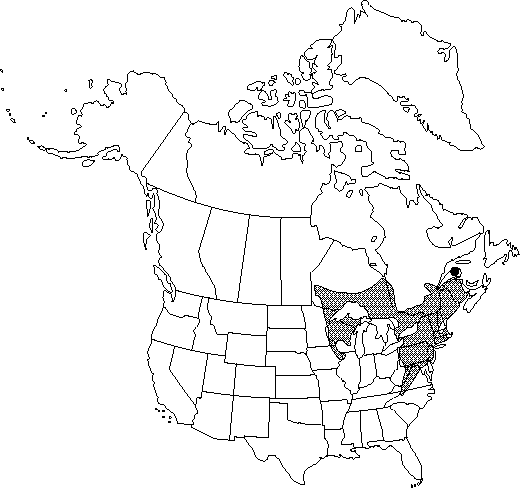Difference between revisions of "Clematis occidentalis var. occidentalis"
FNA>Volume Importer |
FNA>Volume Importer |
||
| Line 1: | Line 1: | ||
{{Treatment/ID | {{Treatment/ID | ||
|accepted_name=Clematis occidentalis var. occidentalis | |accepted_name=Clematis occidentalis var. occidentalis | ||
| − | |accepted_authority= | + | |accepted_authority= |
|publications= | |publications= | ||
|special_status={{Treatment/ID/Special_status | |special_status={{Treatment/ID/Special_status | ||
| Line 11: | Line 11: | ||
|name=Atragene americana | |name=Atragene americana | ||
|authority=Sims | |authority=Sims | ||
| + | |rank=species | ||
}} {{Treatment/ID/Synonym | }} {{Treatment/ID/Synonym | ||
|name=Clematis verticillaris | |name=Clematis verticillaris | ||
|authority=de Candolle | |authority=de Candolle | ||
| + | |rank=species | ||
}} {{Treatment/ID/Synonym | }} {{Treatment/ID/Synonym | ||
|name=Clematis verticillaris var. cacuminis | |name=Clematis verticillaris var. cacuminis | ||
|authority=B.Boivin | |authority=B.Boivin | ||
| + | |rank=variety | ||
}} {{Treatment/ID/Synonym | }} {{Treatment/ID/Synonym | ||
|name=Clematis verticillaris var. grandiflora | |name=Clematis verticillaris var. grandiflora | ||
| − | |authority= | + | |authority= |
| + | |rank=variety | ||
}} | }} | ||
|hierarchy=Ranunculaceae;Clematis;Clematis subg. Atragene;Clematis occidentalis;Clematis occidentalis var. occidentalis | |hierarchy=Ranunculaceae;Clematis;Clematis subg. Atragene;Clematis occidentalis;Clematis occidentalis var. occidentalis | ||
| Line 35: | Line 39: | ||
|elevation=0-1300 m | |elevation=0-1300 m | ||
|distribution=N.B.;Ont.;Que.;Conn.;Del.;Ill.;Iowa;Maine;Md.;Mass.;Mich.;Minn.;N.H.;N.J.;N.Y.;N.C.;Pa.;R.I.;Vt.;Va.;W.Va.;Wis. | |distribution=N.B.;Ont.;Que.;Conn.;Del.;Ill.;Iowa;Maine;Md.;Mass.;Mich.;Minn.;N.H.;N.J.;N.Y.;N.C.;Pa.;R.I.;Vt.;Va.;W.Va.;Wis. | ||
| − | |discussion=<p><i>Clematis occidentalis </i>var.<i> occidentalis</i> formerly occurred in Ohio. Plants in the western part of the range of this variety tend to have larger, more abruptly tapering sepals; they have been segregated as < | + | |discussion=<p><i>Clematis occidentalis </i>var.<i> occidentalis</i> formerly occurred in Ohio. Plants in the western part of the range of this variety tend to have larger, more abruptly tapering sepals; they have been segregated as <i></i>var.<i> grandiflora</i> B.Boivin, but they do not appear to constitute a distinct taxon.</p> |
|tables= | |tables= | ||
|references= | |references= | ||
| Line 44: | Line 48: | ||
-->{{#Taxon: | -->{{#Taxon: | ||
name=Clematis occidentalis var. occidentalis | name=Clematis occidentalis var. occidentalis | ||
| − | + | |authority= | |
| − | |authority= | ||
|rank=variety | |rank=variety | ||
|parent rank=species | |parent rank=species | ||
| Line 59: | Line 62: | ||
|publication year= | |publication year= | ||
|special status=Endemic | |special status=Endemic | ||
| − | |source xml=https://jpend@bitbucket.org/aafc-mbb/fna-data-curation.git/src/ | + | |source xml=https://jpend@bitbucket.org/aafc-mbb/fna-data-curation.git/src/f50eec43f223ca0e34566be0b046453a0960e173/coarse_grained_fna_xml/V3/V3_1148.xml |
|genus=Clematis | |genus=Clematis | ||
|subgenus=Clematis subg. Atragene | |subgenus=Clematis subg. Atragene | ||
Revision as of 21:25, 16 December 2019
Stems ± viny, climbing or trailing, 0.25-3.5 m. Leaves: leaflets unlobed or occasionally 1-3-lobed, (2-)3-6(-10) cm, margins entire or shallowly crenate-serrate. Flowers: sepals remaining moderately divergent, reddish violet, ovate to oblong-elliptic, 2.5-6 cm, margins not fluted, tips rounded-mucronate to nearly acuminate. 2n = 16.
Phenology: Flowering spring.
Habitat: Calcareous cliffs, rock ledges, talus slopes, gravelly embankments, rocky woods, and clearings
Elevation: 0-1300 m
Distribution

N.B., Ont., Que., Conn., Del., Ill., Iowa, Maine, Md., Mass., Mich., Minn., N.H., N.J., N.Y., N.C., Pa., R.I., Vt., Va., W.Va., Wis.
Discussion
Clematis occidentalis var. occidentalis formerly occurred in Ohio. Plants in the western part of the range of this variety tend to have larger, more abruptly tapering sepals; they have been segregated as var. grandiflora B.Boivin, but they do not appear to constitute a distinct taxon.
Selected References
None.